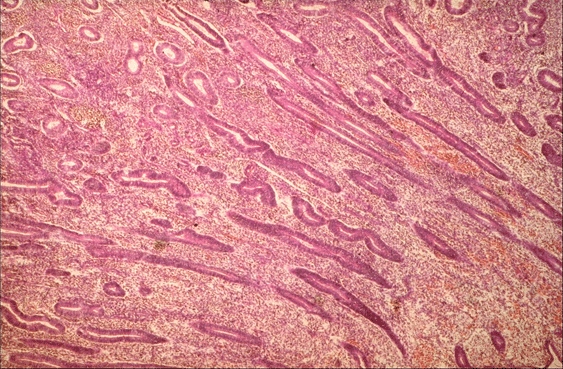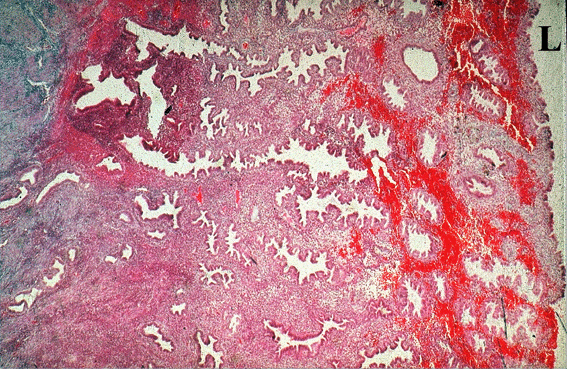PP2.H3.5 +D1 +D2 Uterine Changes During the Menstrual Cycle
Uterine Changes During the Menstrual Cycle:
- The uterine changes during the 29 day menstrual cycle are divided into three phases - menstruation, proliferative phase and secretory phase
- The menstrual phase (days 1 - 4):
- During this phase the stratum functionalis is shed as the menstrual flow
- This occurs due to the involution of the corpus luteum of the ovary following a failure to become pregnant
- Proliferative phase (days 4-14):
- during this phase there is extensive mitotic activity in the connective tissue and epithelium of the stratum basale to "rebuild" the stratum functionalis
- [Ovulation occurs at about day 14]
- Secretory phase (days 15-29):
- During this phase there is hypertrophy of the epithelial cells lining the lumen of the uterus and of the endometrial glands which actively secrete nutrients
- This increased activity of the endometrium provides secretions into the uterine lumen to support the early developing embryo (blastocysts) when it arrives from the uterine tube (~6 days after ovulation)
- There is also hypertrophy of the cells of the connective tissue of the stratum functional is and this provides a nutritive environment in the uterine wall to support the blastocyst when it implants into the endometrium
- During the secretory phase of the menstrual cycle the thickness of the endometrium increases from 1-2 mm to 4-5 mm - this is due to hypertrophy of the cells, and not to mitosis
Uterine Wall - Late Proliferative Phase:
- In the late proliferative phase of the menstrual cycle the uterine glands are long, straight and inactive

Uterine Wall - Late Secretory Phase:
- "Sawtooth" glands of the secretory phase of the menstrual cycle
- Some pooling of blood is evident in the most superficial area of the uterine wall suggesting that this tissue represents late secretory phase / premenstrual phase of the menstrual cycle

